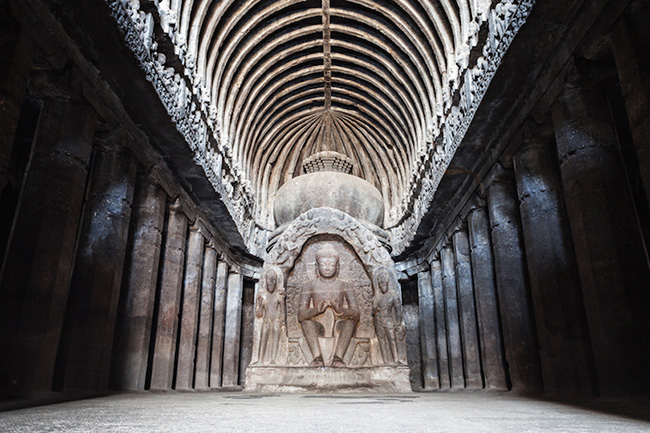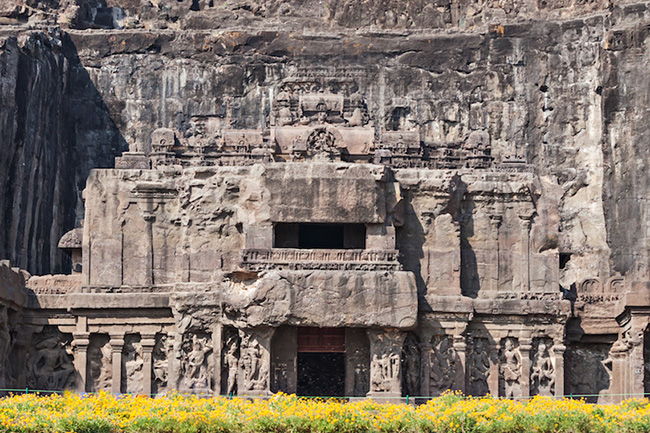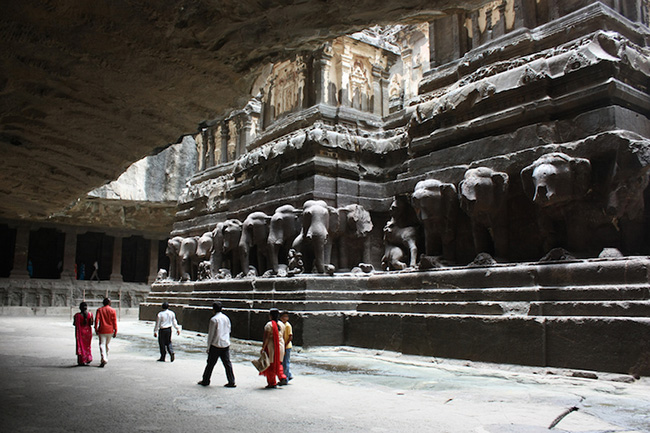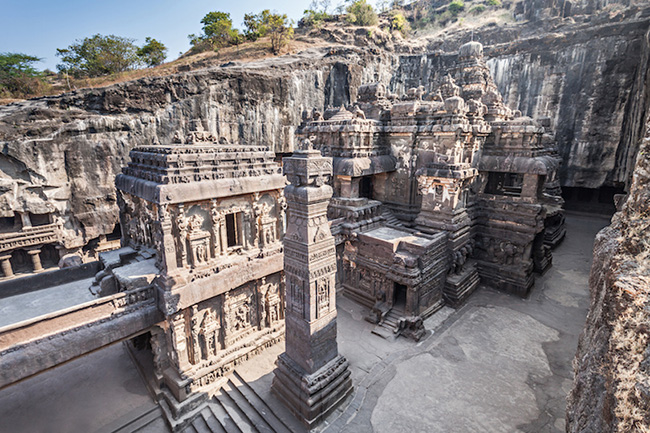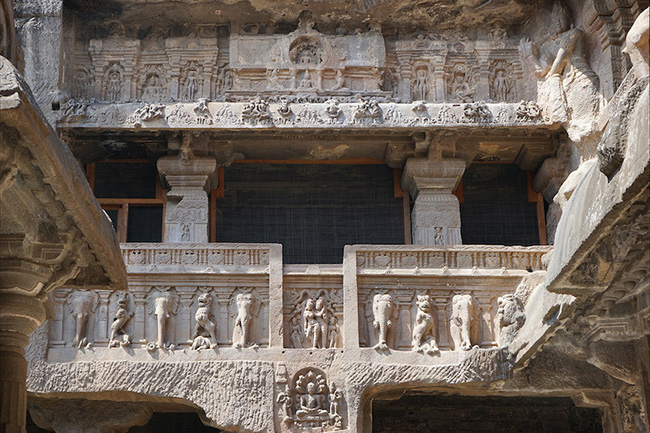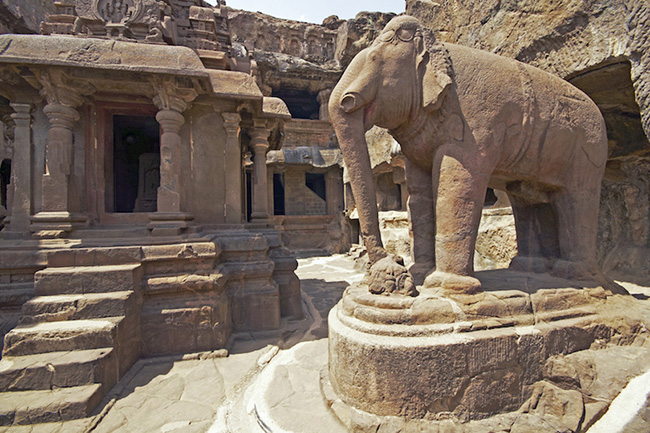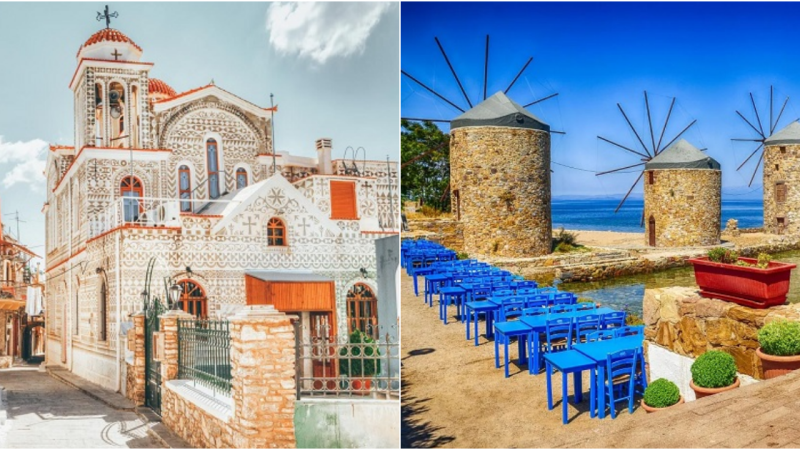Unveiling the Ancient Caves of India: Exploring Ellora
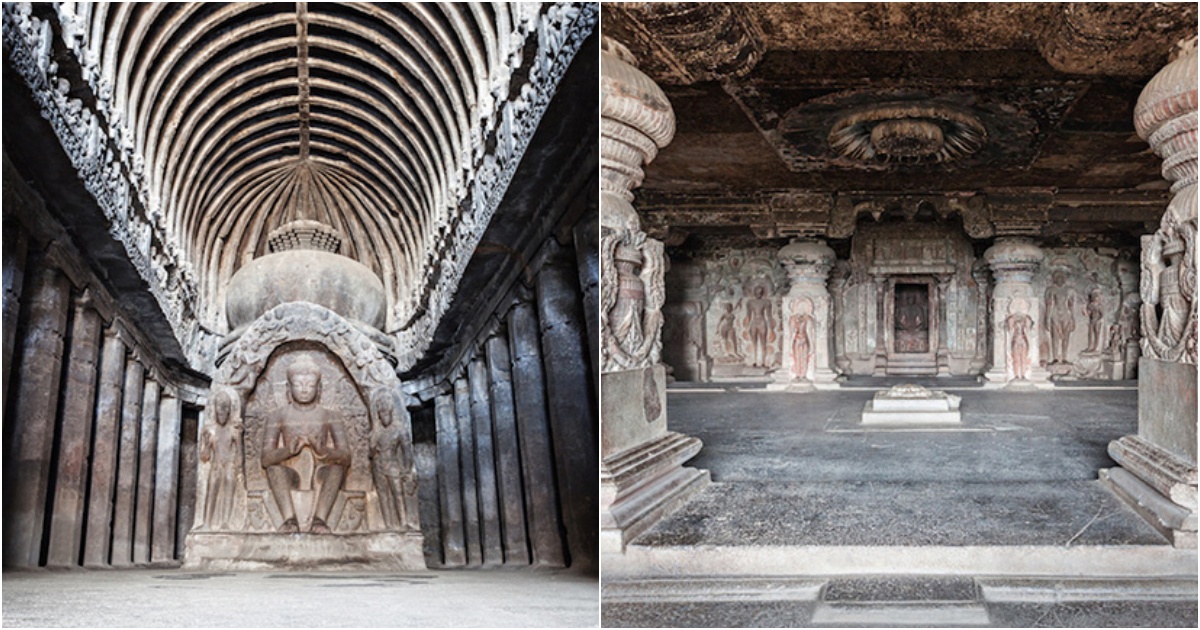
The Ellora Cave Complex, nestled in the northwest region of Aurangabad, India, stands as one of the largest monastery ensembles in the world. This remarkable site was constructed between the 6th and 10th centuries AD, showcasing a harmonious coexistence of Buddhism, Hinduism, and Jainism throughout India’s rich history.
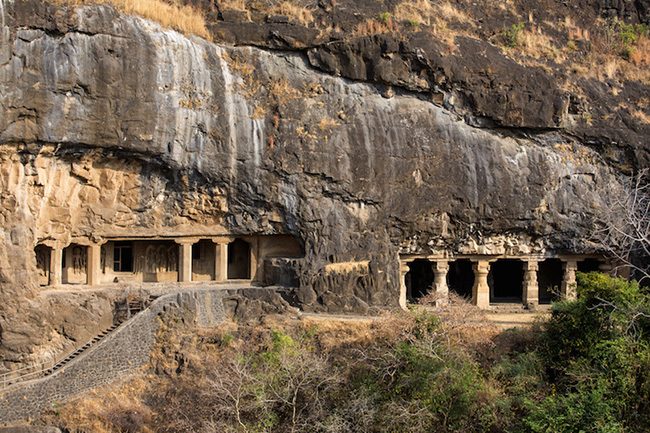
Comprising 12 Buddhist caves, 17 Hindu caves, and 5 Jain caves, the architectural wonders of these groups stand in close proximity to each other, serving as a testament to religious harmony during that era.
The construction work commenced around 500 AD, with the carving of the Hindu caves taking place between 600 and 870 AD, while the monasteries were etched into the basaltic cliffs. In total, there are 34 caves, each numbered sequentially, with the oldest Buddhist cave located in the southern part of the complex.
The Buddhist caves are the earliest, predominantly serving as monastic complexes for activities such as eating, sleeping, and meditation. As the caves progress northward, they grow in grandeur. For instance, Cave 1 is simple, with minimal sculptural works and eight small cells, whereas Cave 11 boasts a three-story structure with spacious upper halls. The shrine within these caves houses five Bodhisattvas (enlightened beings) and seven symbolic Buddha figures representing previous incarnations.
The Hindu caves are centrally positioned within the cave complex. In contrast to the serene Buddhist caves, the walls of the Hindu caves are adorned with intricate bas-reliefs depicting various events from Hindu scriptures.
Hang 14, originally a Buddhist monastery, was transformed into a Hindu temple. Elaborate sculptures embellish its walls, and a recessed wall includes fertility goddesses and their attendants. At first glance, Hang 15 appears simple, but its upper level showcases some of the most exquisite sculptures found at Ellora.
At the heart of Ellora lies Cave 16, known as the Kailasa Temple. It is not actually a cave but an independent temple intricately carved out of solid rock. This colossal architectural marvel spans twice the area of the Parthenon in Athens. Symbolizing Lord Shiva’s abode, Mount Kailash, it was originally covered in a layer of white plaster to resemble a snow-clad mountain.

Archaeologists believe that Hang 21, a Hindu cave, is the oldest at Ellora. It also features exquisite sculptures such as door guardians and river goddesses. Hang 29, carved in the late 5th century, boasts three staircases guarded by pairs of lions. Like other Hindu caves, it is adorned with splendid bas-reliefs.
The Jain caves, carved in the late 8th and 9th centuries, exhibit the austere traditions of Jainism combined with intricate ornamentation. While not as grand as the other caves, they house exceptional artistic creations. Some Jain caves feature vividly colored ceiling paintings, and remnants of these can still be observed.
The most spectacular Jain cave is Hang 32, also known as Indra Sabha. It is a smaller replica of the Kailasa Temple. The first level remains unadorned, while the second level boasts exquisite carvings, such as a lotus flower on the ceiling. Two guardian figures protect the entrance to the shrine. To the right stands Gomatesvara, another enlightened being depicted in meditation amidst the forest.
A visit to the Ellora Caves can be overwhelming due to the multitude of art and architectural wonders to behold. It is best to allocate ample time to explore these caves fully and appreciate the significance they hold.
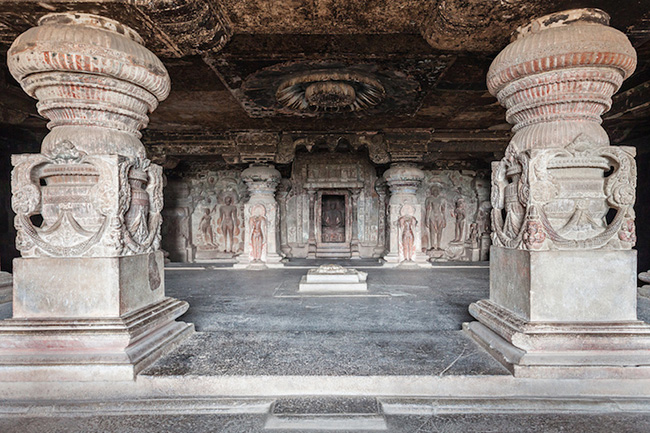
Embark on a captivating journey through the ancient Ellora Caves, where spiritual devotion and artistic brilliance converge
to create an awe-inspiring experience for every visitor.
